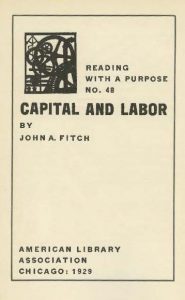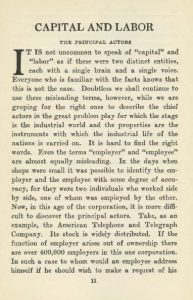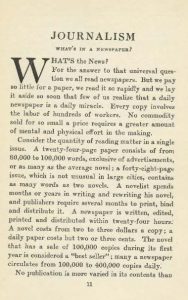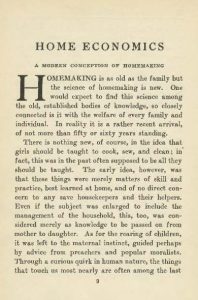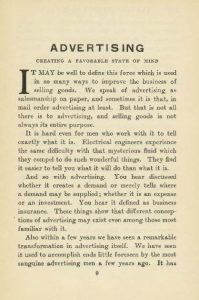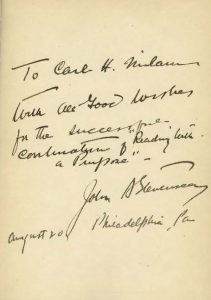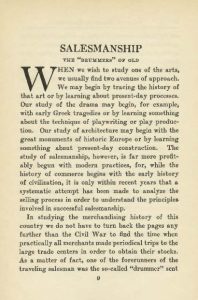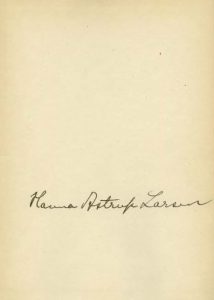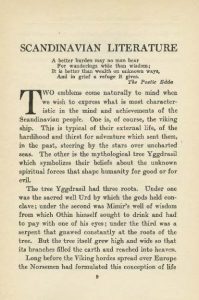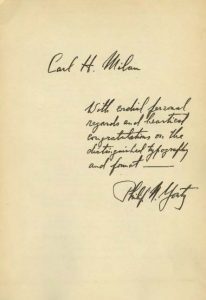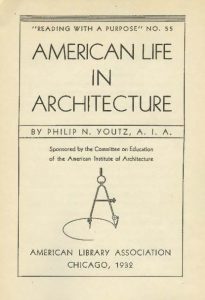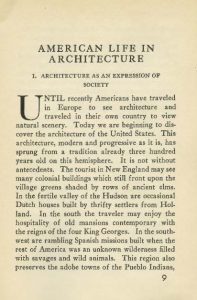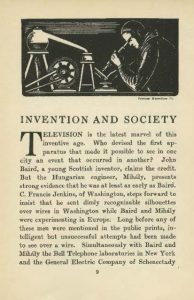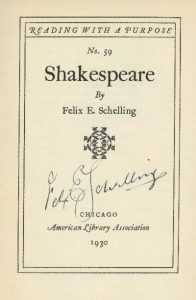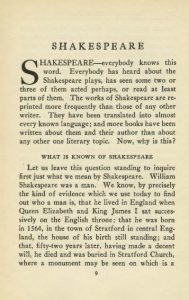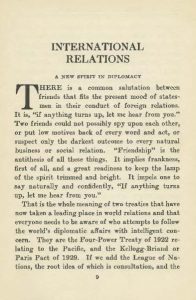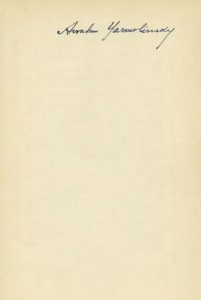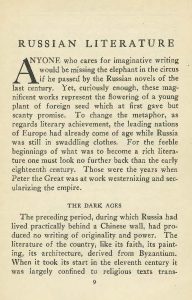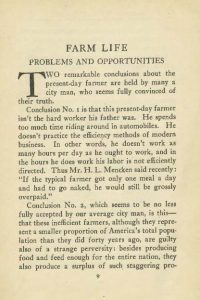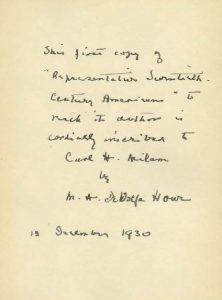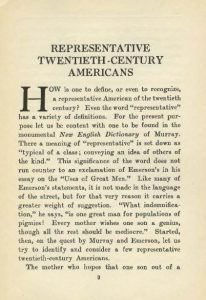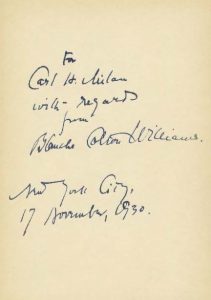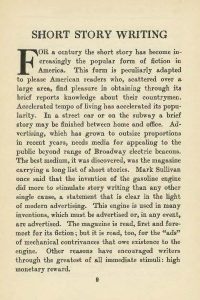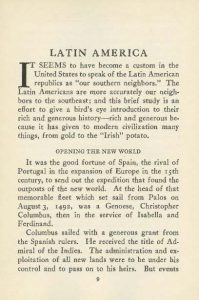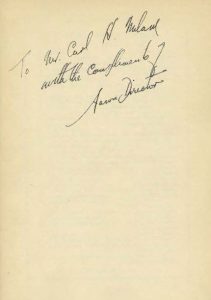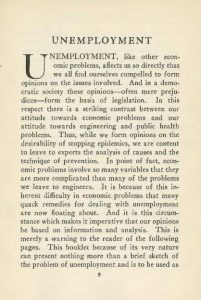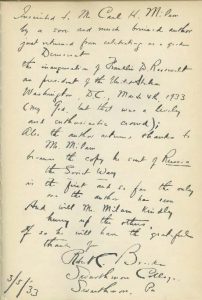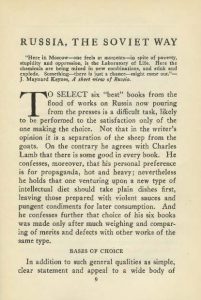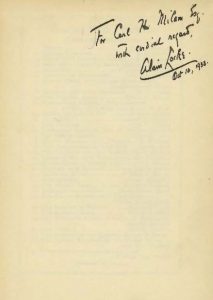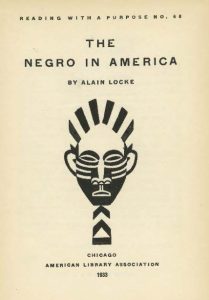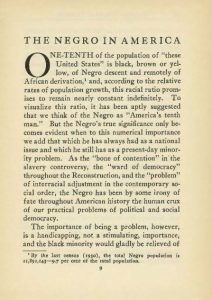From 1925 through 1933, known under the series title Reading with a Purpose, the American Library Association produced a series of resources to support general reading on a variety of topics, for adult readers who completed formal schooling. Each publication is rich in the perspectives of scholarly authorities of its time. Read on to learn more about Reading with a Purpose!
In Capital and Labor, by political economist John A. Fitch, the author explains labor relations in organizations and he recommends 7 books for further self-study. In Journalism, by journalism professor Dr. Willard Grosvenor Bleyer, the author explains the importance of newspapers and how to become a journalist, before recommending 8 additional books for more information. While in Home Economics: The Art and Science of Homemaking, by home economist Helen W. Atwater, the author explains the importance of homemaking and she references 6 additional books for further study.
Careful readers will notice that Capital and Labor also features a unique title page and there are even more images found in the text.
In Advertising, by advertising executive Earnest Elmo Calkins, the author describes the advertising profession and he recommends 6 books for further reading. While in Salesmanship, by salesmanship writer John Alford Stevenson, the author describes the salesmanship profession and he recommends 6 books for further reading too.
In Scandinavian Literature, by translator and writer Hanna Astrup Larsen, the author describes the history of Scandinavian literature through 8 recommended books while suggesting another 22 books for further reading too. While in American Life in Architecture, by architecture professor Philip N. Youtz, the author describes the history of U.S. Architecture before recommending 8 books for further reading too.
At least as early as Scandinavian Literature, at the end of each book, the series began to include additional bibliographies for even further reading. While at least as early as American Life in Architecture, the series began to include study outlines for book clubs or other discussion groups.
In Invention and Society, by science editor and museum director Waldemar Kaempffert, the author responds to popular misconceptions about inventions and inventors, before recommending 6 additional books for reading. In Evolution, by Scottish naturalist Sir John Arthur Thomson, the author responds to popular misconceptions about evolution, before recommending 8 additional books for reading. In Shakespeare, by Early Modern English literature professor Felix Emanuel Schelling, the author describes the life of Shakespeare and recommends 6 plays and many sonnets for further reading, but it does not include a discussion guide. While in International Relations, by geographer Isaiah Bowman, the author describes international relations work and its relationship with geography, before recommending another 5 books to begin future self-study, but it does not include a discussion guide either.
In Russian Literature, by anthologist, critic, and scholar of Russian literature and New York Public Library Slavonic Division Chief Avrahm Yarmolinsky, the author describes the history of Russian literature while recommending 6 books for further reading. While in Farm Life, by author and editor Clarence Poe, the author describes contemporary agricultural economic concerns for both rural and urban audiences, before recommending 8 publications for further reading too.
In Representative Twentieth-Century Americans, by author and editor Mark Antony De Wolfe Howe, the author describes 6 contemporary Americans with recommendations for autobiographies and biographies for more reading too. While in Short Story Writing, by author and editor Dr. Blanche Colton Williams, the author describes how to write short stories and recommends both 4 books for further instruction and as many as 25 recommended short story writers for examples.
In Latin America, by U.S. diplomat James Grover McDonald, the author describes Latin American history and economic developments, before recommending 5 books for further self-study. While in Unemployment, by economist Dr. Aaron Director, and the author explains macroeconomic factors which affect unemployment before recommending 6 books for further self-study.
In Russia, The Soviet Way, by economist Dr. Robert Clarkson Brooks, explains the contemporary difficulty of identifying recommendable books to readers curious about the economic development of Soviet Russia and he ultimately recommends 6 books. Different from its predecessors, this book includes a reading group outline, with suggested group discussion questions, in place of a self-study outline.
Careful readers will notice that this book’s inscription is the longest inscription, and that means that it could be a rich resource for researchers. As we learn from this inscription, the author had attended recently-elected President Franklin Delano Roosevelt’s inauguration and in a word the crowd was “lively”.
The final book of the Reading with a Purpose series was The Negro in America, by the philosopher Dr. Alain Locke. In this book, the author explains African American history and he recommends 8 books for further self-study. Like its predecessor publications, this book also includes an outline designed for reading groups rather than individual self-study.
From the sciences to the arts and humanities, the Reading with a Purpose Series was published from 1925 through 1933, with the goal of providing recommended reading on a variety of topics to support the lifelong learning of adults. In this sample of some publications from the series, readers can see both the breadth of topics and the authors’ writing styles, as well as how special collections, like archives, can hold unique samples of ephemeral information like personal inscriptions rich with personal information about the writers and their readers.
Copies Available at Your ALA Archives
Physical copies of Reading with a Purpose are available for viewing at the ALA Archives. Please view the Record Series 29/3/10 database record entry, for more information.
Got Something to Donate to the Story So Far?
Many people have been involved in the long history of A.L.A. publications and bibliographic work. Do you have any information about Reading with a Purpose participants, collaborators, publications, or beneficiaries? Please contact us through social media. We and our readers would like to read about it.
